
Amanita muscaria, commonly known as the fly agaric or fly amanita, is a basidiomycete of the genus Amanita. It is a large white-gilled, white-spotted, and usually red mushroom.

The genus Amanita contains about 600 species of agarics, including some of the most toxic known mushrooms found worldwide, as well as some well-regarded edible species. The genus is responsible for approximately 95% of fatalities resulting from mushroom poisoning, with the death cap accounting for about 50% on its own. The most potent toxin present in these mushrooms is α-Amanitin.

Amanita pantherina, also known as the panther cap, false blusher, and the panther amanita due to its similarity to the true blusher, is a species of fungus found in Eurasia with poisonous and psychoactive properties.

Ibotenic acid or (S)-2-amino-2-(3-hydroxyisoxazol-5-yl)acetic acid, also referred to as ibotenate, is a chemical compound and psychoactive drug which occurs naturally in Amanita muscaria and related species of mushrooms typically found in the temperate and boreal regions of the northern hemisphere. It is a prodrug of muscimol, broken down by the liver to that much more stable compound. It is a conformationally-restricted analogue of the neurotransmitter glutamate, and due to its structural similarity to this neurotransmitter, acts as a non-selective glutamate receptor agonist. Because of this, ibotenic acid can be a powerful neurotoxin in high doses, and is employed as a "brain-lesioning agent" through cranial injections in scientific research. The neurotoxic effects appear to be dose-related and risks are unclear through consumption of ibotenic-acid containing fungi, although thought to be negligible in small doses.
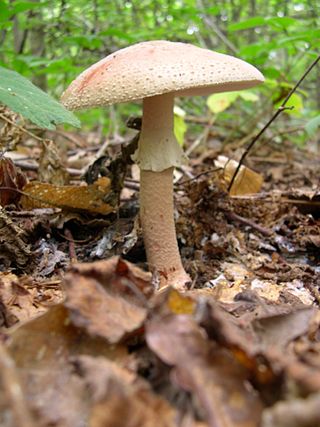
The blusher is the common name for several closely related species of the genus Amanita. A. rubescens, or the blushing amanita, is found in Europe and eastern North America, and A. novinupta, also known as the new bride blushing amanita, is found in western North America. Both their scientific and common names are derived from the propensity of their flesh to turn pink upon bruising or cutting.
Boana beckeri is a species of frog in the family Hylidae. It is endemic to Brazil and is only known from a handful of localities in southern Minas Gerais and adjacent northeastern São Paulo. The specific name beckeri honors Johann Becker, Brazilian zoologist who collected many of the types.

Amanita chrysoblema yellow-orange variant, commonly known as the American yellow fly agaric, is a basidiomycete fungus of the genus Amanita. It is one of several varieties of muscaroid fungi, all commonly known as fly agarics or fly amanitas.

Lasianthaea is a genus of flowering plants in the family Asteraceae. The species are native primarily to Mexico, with one species extending just over the border into the United States and another south to northwestern South America.
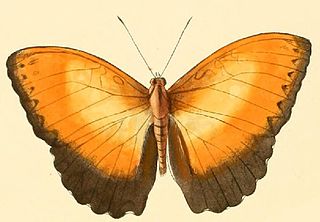
Cymothoe beckeri, or Becker's creamy yellow glider, is a butterfly in the family Nymphalidae. It is found in Nigeria, Cameroon, Gabon, the Republic of the Congo, Angola, the Democratic Republic of the Congo, the Central African Republic and Uganda. The habitat consists of forests.

Amanita battarrae, also known as the grey-zoned ringless amanita, is a species of Amanita found in Italy in the fall as well as in eastern Europe.
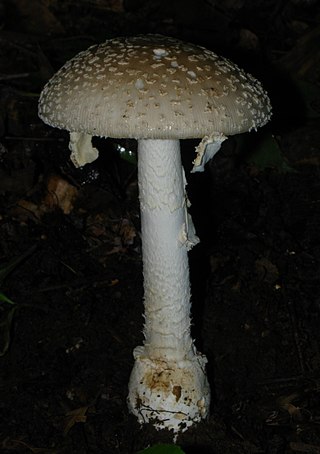
Amanita multisquamosa or the small funnel-veil amanita is a species of Amanita from the coniferous forest of eastern North America.

Amanita curtipes is a species of Amanita from southern Europe.

Amanita proxima is a species of Amanita from France, Italy, and Spain. It is poisonous.
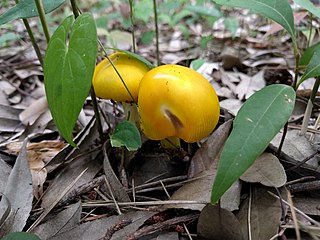
Amanita kitamagotake or Becker's ringless amanita is a species of Amanita from Japan.
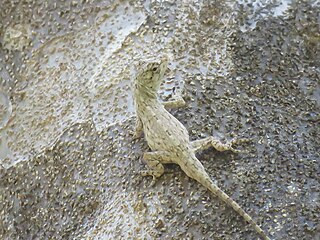
Anolis beckeri, also known commonly as Becker's anole and Becker's lichen anole, is a species of lizard in the family Dactyloidae. The species is native to Central America and southern North America.

Amanita calyptratoides, or Peck's candlestick amanita, is a species of Amanita found in southern California

Amanita carneiphylla is a species of Amanita found in Western Australia growing among Eucalyptus, Banksia, and Allocasuarina

Amanita betulae is a species of Amanita found in growing in birch and mixed hardwood in Europe


















